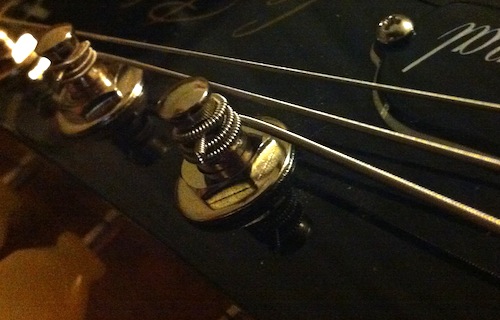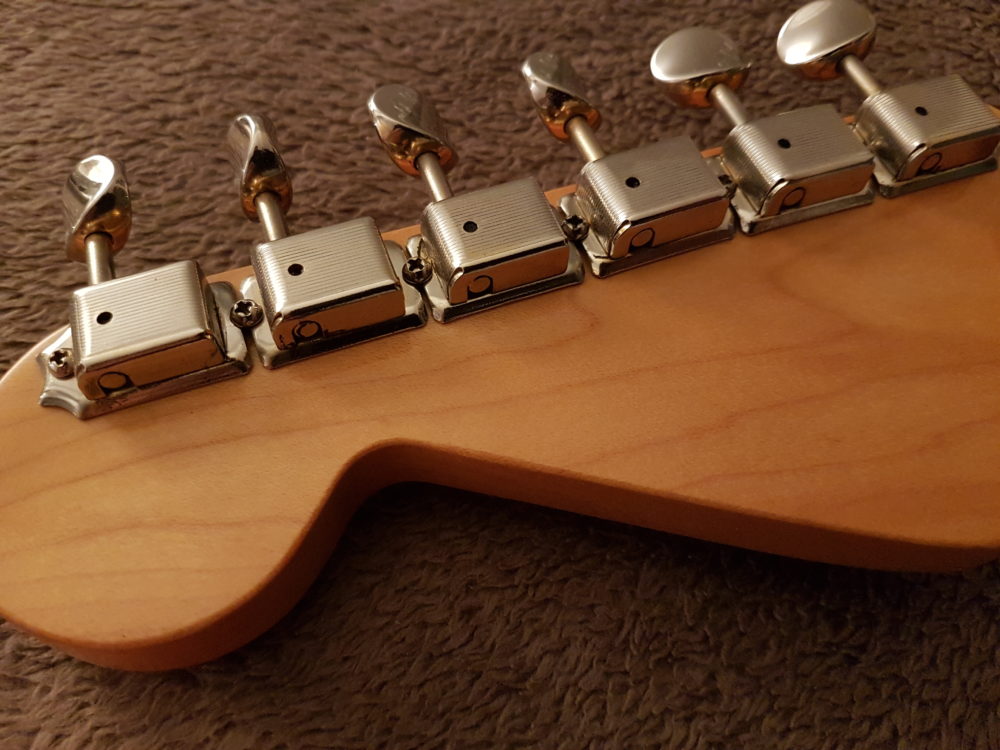Is there anything worse than a guitar with tuning stability issues? Probably not, that’s very very frustrating.
Typically this issue is addressed with an upgrade on top of the big money already spent for the guitar itself: a good example here would be a set of flashy locking tuners or a better bridge.
Sometime we modify the functionality of the instrument (such as by blocking the tremolo bridge) or we change our habits (such as changing the gauge or the brand of the strings we use).
Other common attempts are using lube in the nut slots, adding an extra spring to the trem claw and so on, so forth.
All the above mentioned are meant to bring, each to a different extent, some extra stability to the tuning but they are not the solution. Which, as usual, is much simpler, cheaper and at hand.
Here it is, in three simple steps.
1) Learn how to string properly.
Let’s keep it simple and clean.
You don’t really need any lock or tie, even less locking tuners (although those come in handy for a very quick restringing).
One winding above the string cut and two to three below. That’s all you need. Done.

(image via)
Important: if you aren’t sure on the correct orientation of the strings on the headstock, you might just check a picture of your guitar on Google Image.

2) Stretch your strings.
This is a critical step which really you can’t skip. I mean it, you just cannot!
The way I do is based on a simple action performed on each string:
– after having installed a fresh set of strings, I tune the guitar to pitch. Now, with the guitar in playing position, I fret the guitar at the first fret with my left hand and grab the low E string with my right hand and I stress it a little bit by pulling and pushing it like you can see in the gif below.

Just remember to be more gentle on the high E and the B strings or you will risk a breakage.
After some gentle stretching, check if string is still in tune (a chromatic tuner will help us here): at first you’ll notice how the string goes dramatically flatter. Re-tune and strech again and so on until the sting stay in tune.
So you know you are done and can switch to the following string.
3) Have the nut slots cut and polished.
This is another must, even more in presence of a non-locking floating system (like on your standard Strat). If you ear some strange “pings” coming from the nut while bending a string or tuning the guitar, it means that it’s time to have the nut properly worked as the slots are trapping the strings (i.e. the strings don’t return to the zero point after the mentioned actions, so , for example, after a bending the string goes sharp).
That “ping” in fact is the noise of the string fighting the surfaces of the slot as the slot is too narrow or too irregular. No lube will be helpful at this stage, not before having the nut properly cut and polished (here the article on the nut slots).

Extra: if your guitar comes with a trem bridge or a Floyd Rose, you may also need a proper setup for this system, as it’s critical for this to have the correct balancement between strings tension and springs tenson.
For any information or a quote please visit the contact page or find us on Facebook.
